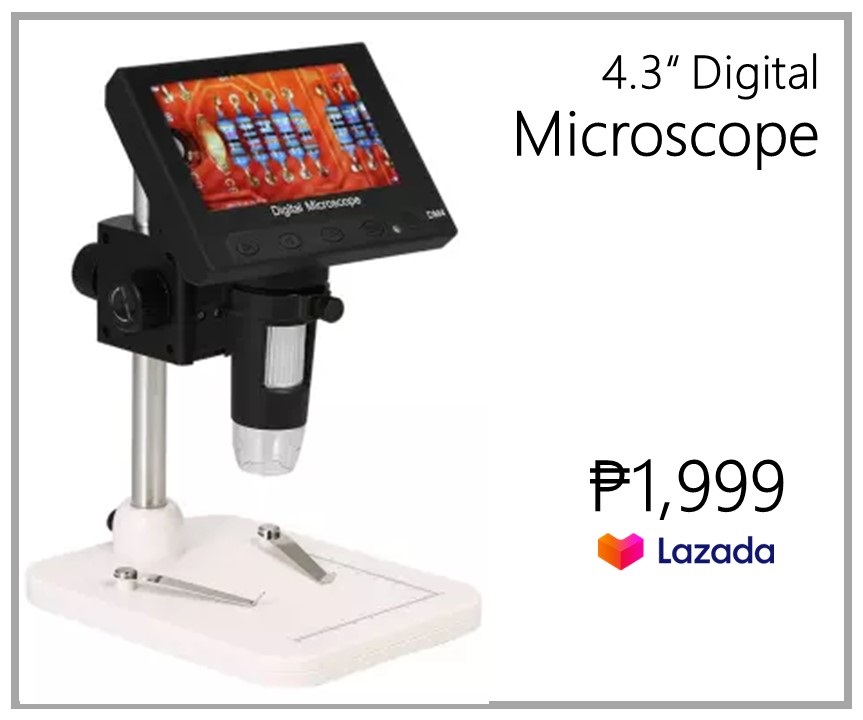Table of Contents
ToggleLet’s peek behind the colorful ‘bahay na bato’ stone houses and nipa huts, revealing an exciting array of innovative gadgets that transform everyday chores into effortless tasks. Prepare yourself for a fascinating exploration as we uncover eight essential appliances that are revolutionizing each Filipino kitchen, setting new standards for convenience while reinforcing the rich cultural ethos of this tropical archipelago!
Understanding Filipino Home Cooking and Filipino Kitchen
Diving into the vibrant Filipino home cooking scene, we unravel a culinary tapestry that is as diverse as the archipelago’s 7,000 islands. Its cuisine, like its people, is a colorful mixture of Malay, Chinese, Spanish, and American influences, all of which play an integral part in any Filipino kitchen. From traditional recipes passed down generations to adaptations of international dishes with a local twist—think spaghetti bolognese simmered in banana ketchup for that unique sweet profile—Filipino home cooking offers an intriguing fusion of tastes, representing its historic past and progressive future.
What really sets Filipino home cooking apart, however, are their kitchens. A typical Filipino kitchen isn’t about high-tech appliances, although they’re welcome additions! Rather, it’s marked by human warmth and familial bonds forged over shared meals. The real secret ingredient? The Filipinos’ heartfelt love for their families transformed into gastronomic delights—a riot of flavors infused into every dish. Couple this passion with groundbreaking kitchen appliances purpose-built to enhance traditional methods of cooking, and you have an unforgettable culinary journey right at home!
What are the Essential Appliances Revolutionizing Filipino Kitchen? Introduction
When it comes to martial arts, one cannot overlook the Filipinos’ contribution to Arnis; when on the subject of delectable cuisine, the same ethos goes! The Filipino kitchen has always been a fascinating fusion of traditional charm and innovativeness. But as times evolve, new appliances become essential parts of this culinary haven, crafting a subtle revolution that perfectly blends tradition and modern convenience in Filipino cooking.
Flip open your curiosity as we dive into the role of these game-changing appliances in redesigning how Filipino cuisine is prepared and savored! From pressure cookers speeding up adobo-making to high-tech rice cookers ensuring each grain is flawlessly cooked, we are ushering in an era where flavor meets functionality. These innovations are not just about speeding up processes; they’re about enhancing age-old recipes, contributing to sustainability efforts, and, most importantly, surely making Lola proud with consistent deliciousness every single time! So tighten your apron strings—you’re about to uncover eight essential appliances that are rewriting culinary rules in every Filipino kitchen!
Here are 8 essential appliances revolutionizing Filipino kitchen:
Filipino Kitchen 1: Rice Cooker
Embarking on the voyage of Filipino culinary marvels begins with the repertoire of a rice cooker—one cannot simply overlook its overwhelming significance! An unassuming appliance yet a powerhouse performer in any local kitchen setting, it’s more than just an instrument for cooking grains. The rice cooker embodies much more—a fond reminiscence of family lunch gatherings and mystical tales from ancient Filipino folklore.
Incredibly versatile and accommodating to a variety of dishes—from traditional sinangag (garlic fried rice) to delicacies like suman (sticky rice cake), the humble rice cooker stands as an unsung hero in the evolution of Filipino cuisine. It simplifies every complex recipe while maintaining that distinct, authentic taste Filipinos hold dear. So next time you hear the gentle, rhythmic bubbling sound emanating from this essential kitchen magician, remember—it’s not just cooking—it’s creating stories and passing down centuries-old culinary traditions, one perfectly cooked grain at a time.

Filipino Kitchen 2: Electric Kettle
Having explored the utility of a state-of-the-art rice cooker, we now dive into another crucial asset in modern Filipino kitchens: the electric kettle. This isn’t your typical tea-time accessory; it’s a culinary power tool that advances Filipino food prep techniques remarkably. Serving more purposes than just brewing coffee or steeping tea, this jack-of-all-trades appliance has redefined efficiency.
From boiling saba (plantains) for minatamis na saba to heating sinigang broth, the electric kettle mitigates the need for time-consuming stove-top methods. The cultural staple of instant noodles is also transformed from a late-night snack to a gourmet meal in seconds! More importantly, the ease and safety features make it a must-have in every ‘Lola’s’ household, protecting her beloved apo (grandkids) from exposure to open flames. As we move towards busier and faster-paced lifestyles, can we really afford not to embrace these changes?

Filipino Kitchen 3: Refrigerator
Filipino Kitchen 3: Refrigerator—a significant player in not only food preservation but also in the culture-imbued culinary practice of recycling dishes. A typical Filipino refrigerator houses more than just fresh ingredients; it’s a time capsule that bears witness to family gatherings, weekends spent cooking together, and honored homemade food recipes. One can often find leftover adobo and sinigang exquisitely reincarnated into sandwiches or stir-fries on successive days!
Every container unveils a narrative of Filipino hospitality: cooked meals rarely for one person but always enough to cater to unexpected guests. Such emphasis on abundance and over-preparation allows residents to enjoy diverse cuisine from their own refrigerators at any given moment! Not merely an appliance, the refrigerator manifests as a reflection of gracious hospitality embedded deep within the fabric of Filipino culture.

Filipino Kitchen 4: Gas Stove and Oven
When discussing the very heart of the Filipino kitchen, one cannot dismiss the quintessential role of a gas stove and oven. A high-powered gas stove is, hands down, one of the mainstays in every local household, a treasured appliance that has been partaking in coalescing the symbolic cultural flavors deeply ingrained within each droplet of the Philippines’ famously versatile dishes.
The captivating aspect of Filipinos using gas stoves and ovens lies not only in their practicality or efficiency but also in their commitment to preserving authentic cooking techniques. Think about how they masterfully char-grill an eggplant directly on the open fire for Torta or slow-cook a succulent Adobo inside an intricately designed clay pot perched atop these gas burners. This shared affinity with raw fire control demonstrates more than just culinary skills; it’s a living testament to this island nation’s vibrant heritage, making waves in modern kitchens around the globe!

Filipino Kitchen 5: Blender/Food Processor
Moving to section five, we dive into the magic world of the blender food processor. A game-changer in Filipino kitchens, this appliance has taken classic dishes to a new level. Traditionally, many Filipino dishes required hours of manual grinding and mashing ingredients—a labor-intensive process that imparted unique flavor but was certainly time-consuming. Today’s high-powered blender food processors simplify this process, retaining the integrity of flavors while saving precious time.
What’s fascinating about using these processors in a Filipino kitchen is how they handle local ingredients. Coconut, a core ingredient in Philippine cuisine for both savory and sweet dishes, gets effortlessly grated or turned into milk or cream. Then there’s ‘bagoong,’ a fermented fish paste versatile yet hard to finely blend due to its gritty texture; with this modern contraption, it happens in seconds! The blender food processor has truly become an unsung hero, making intricate Filipino recipes more accessible than ever before.

Filipino Kitchen 6: Microwave Oven
Filipino cuisine is celebrated for its layered flavors that blend sour, sweet, salty, and spicy elements. The sixth force contributing to the reshaping of these culinary masterpieces in Filipino kitchens is the microwave oven. Balancing traditions with modern convenience, the microwave oven is enabling Filipinos to imbibe international efficiency while maintaining authentic Pinoy taste.
The microwave has evolved far beyond popping popcorn or reheating leftovers in a typical Filipino household today. It’s now fostering creative culinary adaptability ranging from ingenious desserts like Leche Flan or Bibingka (rice cake) to more practical uses such as ‘blanching’ vegetables for Adobo or melting chocolate for Chocnut Truffles—providing instant gratification without sacrificing flavor authenticity. In essence, this kitchen mainstay forms an apt symbol for how contemporary Filipinos are successfully marrying the tastes of home with the need for quick-paced living. So next time you step into your kitchen, revel in how this seemingly mundane appliance extends its utility value by reflecting the dynamics of a rapidly transforming Filipino culinary landscape!

Filipino Kitchen 7: Bread Toaster
Just like the rest of the world, bread is an essential part of a Filipino’s meal. While making toast is relatively simple, the real magic lies in the humble appliance that dutifully brings crispy perfection every morning: a bread toaster! Filipinos’ love for bread extends far beyond plain toast, as there are a variety of local recipes, such as pandesal and ensaymada, that require toasting.
Much more than utility, the latest bread toaster models have become style statements, adorning contemporary Filipino kitchens with their sleek aesthetics. Their innovative technology ensures evenly toasted slices every time while preserving those savory nuances we all crave. Be it rustic brown or lightly toasted, your perfect slice is just one press away with a reliable Filipino kitchen companion—the bread toaster!

Filipino Kitchen 8: Air Fryer
The scent of crispy lechon kawali wafting through the air and the sizzle of turon or lumpia Shanghai as it turns a delightful golden brown are familiar sounds and smells in the heart of every Filipino kitchen. But with technological innovation sweeping across cuisines globally, let’s delve into the magic being made by that modern gadget, the air fryer.
The beauty is all in its simplicity. The Air Fryer introduces an easy and healthier way to replicate your favorite deep-fried Filipino dishes without drowning them in oil. Imagine biting into bagnet or crispy pata with a perfect crunch but without guilt! With reduced calories and faster cooking time, this ingenious appliance makes you reconsider traditional methods. It’s not just about embracing change—it’s about revolutionizing classic Pinoy indulgence while finding balance for our health, too! A reinvention aiming for both aesthetic improvements on our plate and driving home values of wellness, welcome to Filipino Kitchen 8: Air Fryer Edition.

The Evolution of Filipino Kitchens
Tracing the evolution of Filipino kitchens is akin to tracing the nation’s rich cultural history, as they both intertwine significantly. The aesthetics, structure, and functionality of traditional Filipino kitchens were largely influenced by geo-environmental elements and culture. Bamboo slats, nipa leaves, mud bricks, and materials sourced directly from nature were generously used in constructing stilt-raised kitchen areas, separating them from main living quarters—a reflection of the harmonious interplay between lifestyles and abundant local resources.
Fast-forward to today’s contemporary world: Filipino kitchens collectively embody both facets of time-tested tradition and modern innovation. Filipinos have embraced new-age appliances as integral parts of their culinary spaces while keeping a firm grip on their sentimental past. There is an exciting clash between ‘old’ and ‘new,’ where manually operated Kalan (clay stoves) share space with high-efficiency induction hobs or steamed rice cooked in handwoven baskets rub shoulders with smart multi-functional cookers! It highlights that while Filipino tastes adapt to digital advances, they are undeniably intertwined with cherished customs that make every dish tell tales about its rich historical canvas.
The Essential Role of Appliances in Filipino Kitchen
In the heart of every Filipino household, the kitchen reigns supreme. Left are the days when they are seen as just a space for cooking and eating. Now, stylish appliances have woven themselves into being essential in preserving our rich culinary tradition while offering modern convenience. The cuisine is famous for its complexity; it lends cutting-edge technology to branded appliances, and you can transform those laborious recipes into enjoyable experiences.
You’ll see multi-cookers replacing the traditional “kalan” or stove—a single device that can slow cook Adobo, saute Sinigang ingredients until they meld together beautifully, or pressure cook Humba in minutes! Refrigerators aren’t simple storage places anymore; with innovative features like humidity control or flexible compartments, leftovers retain their freshness, making them handy when surprise visits from relatives arrive. No longer does preparing traditional dishes require an entire day—thanks to these revolutionizing appliances, Filipino families enjoy not just reduced cooking time but elevated dining, too.
The Evolution of Filipino Kitchen Appliances
The evolution of Filipino kitchen appliances is a fascinating plunge into history and modernity. Rooted in a highly involved food culture, Filipinos have always been recognizable innovators when it comes to culinary methods and tools. Traditional devices like the ‘Palayok’, a clay pot used for slow-cooking dishes over an open fire, have made way for pressure cookers and multi-function ovens, bridging history with the conveniences of contemporary technology.
Another game-changing evolution can be seen in the ubiquitous ‘kalan,’ a simple stove fueled by charcoal or wood—now replaced by electric induction stoves capable of fast, efficient cooking while saving energy. These adaptations reflect not just practicality but also our response to global environmental concerns. They are testimonials to Filipino resilience and creativity, proof that we continually adapt while retaining our heritage—even in our kitchens.
The Role of Technology in Filipino Kitchens
As we delve into the fascinating world of Filipino home cuisine, you’ll see that technology has become a steadfast cornerstone in modern kitchens. It isn’t just about simplifying meal preparations but also enriching the entire culinary experience for Filipinos.
Think about it: smart rice cookers that precisely control temperatures to deliver perfectly cooked jasmine rice every time, or high-speed blenders grinding fresh ingredients for traditional sauces and sambal with unprecedented finesse. Leveraging innovative appliances promotes efficiency while preserving the essence of our delicious heritage recipes. Beyond practicality, technology has tastefully created a union between tradition and innovation in Filipino kitchens. Discover below the eight key pieces of tech-nurtured brilliance contributing to this dynamic revolution!
Benefits and Uses of Modern Filipino Kitchen Tools
One fascinating innovation in Filipino kitchens is the introduction of modern rice cookers, which now feature multiple cooking functions. Traditionally, Filipinos meticulously cooked their staple food, rice, over a manually controlled fire. But with today’s high-tech rice cookers featuring smart technology like digital timers and automatic heat adjustments, preparing perfectly cooked rice has become effortless. Plus, some models even have added features to bake cakes or steam dim sum!
The Turbo Broiler is another indispensable tool that significantly enhances the efficiency of the Filipino culinary process. This compact appliance has revolutionized the way Filipinos prepare traditional dishes like ‘lechon’ (roasted pig) by ensuring thorough cooking while retaining all its mouth-watering flavors and crispiness—aspects we always loved about our favorite local delicacies! With design advancements, including temperature control functions and a see-through cover that lets you monitor your dish’s progress without disturbing the cooking process, it’s no wonder why this broiler has bagged a permanent spot in every Filipino kitchen!
The Impact on Cooking Methods and Efficiency in a Filipino Kitchen
Undeniably, the Filipino kitchen has seen a significant transformation in recent times. Cooking methods have evolved astronomically from traditional open-fire techniques to meticulous craftsmanship within contemporary modular kitchens. With each advancement geared towards boosting efficiency, the impact on today’s Filipino cooking cannot be overstated.
Modern appliances such as rice cookers and multicookers have revolutionized staples like adobo and sinigang, slashing time spent laboriously stirring and instead affording Filipinos precious moments with loved ones. Imagine peering into a slow cooker, percolating Kaldereta, brimming with succulent meat softened expertly over hours—all essentially hands-free cooking. That’s not just efficient; it’s smart! This progress simultaneously retains authentic flavors while weaving in maximum practicality, giving rise to an unprecedented era of delicious convenience right in our beloved Filipino kitchen.
Making the Right Choice: Buying Guide
Choosing the perfect kitchen appliance is no less than striking a balance between several influencing factors like budget, space, style, and utility. Your buying decision can essentially shape your culinary journey. Navigating the diversified market of modern appliances requires understanding more than just product specifications; it is about how they integrate into your lifestyle.
One consideration to make is energy efficiency, an environment-friendly tip that also reduces your electricity bill. Moreover, due attention must be given to ease of use and maintenance; remember, functionality beats aesthetics! A smart purchase goes beyond upfront costs, as you should consider longevity and after-sales service. Thus, making the right choice entails comprehensive research tailored to personal needs with convenience at its core.
Summary: Embracing the Future of Culinary Experience for Each Filipino Kitchen
On a concluding note, it’s time to rightly embrace the rich landscape of culinary evolution in every Filipino kitchen. It’s about much more than just acquiring the latest appliances; it’s about valuing sustainability and efficiency and, more importantly, preserving our distinct cultural tastes while intertwining them with the new palates offered by technology. Our kitchens embody our adaptation to change and exemplify a unique blend of tradition and innovation.
By harmonizing these novel appliances with our own conventional cooking styles, we invite an unmatched culinary experience that spans generations in each Filipino household. By sewing together the essence of tradition with forward-thinking concepts in cooking technology, we bind closer to the fusion of authenticity and modernity. This transformation is not only revolutionizing Filipino kitchens but also casting ripples across worldwide gastronomy.















